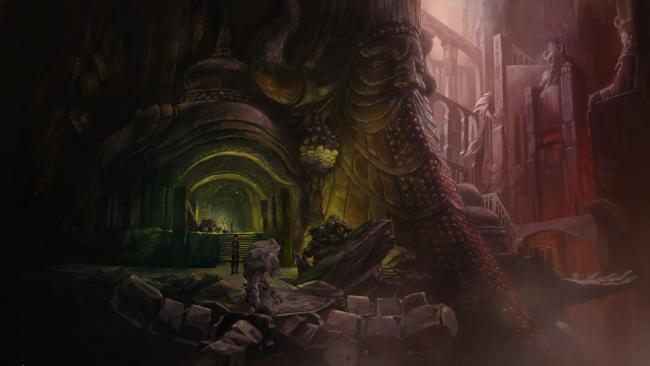- Wondering how to get Monopoly GO! free rolls? Well, you’ve come to the right place. In this guide, we provide you with a bunch of tips and tricks to get some free rolls for the hit new mobile game. We’ll …
Best Roblox Horror Games to Play Right Now – Updated Weekly
By Adele Wilson
Our Best Roblox Horror Games guide features the scariest and most creative experiences to play right now on the platform!The BEST Roblox Games of The Week – Games You Need To Play!
By Sho Roberts
Our feature shares our pick for the Best Roblox Games of the week! With our feature, we guarantee you'll find something new to play!All Grades in Type Soul – Each Race Explained
By Adele Wilson
Our All Grades in Type Soul guide lists every grade in the game for all races, including how to increase your grade quickly!
Hands-on with Satinav’s Sequel: Our First Real Taste of Memoria
After spending some time with a preview build of Memoria, it’s clear that the sequel to The Dark Eye: Chains of Satinav is ready to follow in the footsteps of its predecessor; wrapping a conventional point-and-click fantasy adventure in gorgeous, hand-painted visuals and a wonderful story with just a hint of darkness around the edges.

After spending some time with a preview build of Memoria, it’s clear that the sequel to The Dark Eye: Chains of Satinav is ready to follow in the footsteps of its predecessor; wrapping a conventional point-and-click fantasy adventure in gorgeous, hand-painted visuals and a wonderful story with just a hint of darkness around the edges.
The preview version of Memoria I played provided English subtitles over the original German voice work, so I can’t even begin to speak to the quality of the translation or the English voice acting, although Daedalic has a pretty decent track record in that regard. It also has a very solid reputation for crafting top-flight adventures with production values that rival those of mainstream, major-studio releases in North America, and based on what I saw of its upcoming addition to The Dark Eye franchise, that reputation is safe.
Memoria follows the ongoing adventures of the bird catcher Geron, whose Elven love Nuri – and there’s a potentially major spoiler ahead for those who haven’t finished Chains of Satinav, by the way – has been turned into a bird. Geron has a plan to revert her to elven form with the help of a mysterious traveling merchant, but the price of his aid is high, and very strange: He gives Geron three days to solve a riddle that’s 450 years old.

The riddle relates to the fate of a forgotten princess, Sadja, who led a holy army against a massive incursion of demons centuries ago in a quest to become the greatest heroine of all time – but then, on the cusp of victory, disappeared. Solve her riddle and Nuri will be restored; fail, and she remains a raven forever.
Memoria looks and plays virtually the same as Chains of Satinav; the twist is that you’ll also spend time in the past playing as Sadja. While her segments are mechanically identical, they feel more sweeping than Geron’s, as she seeks to save the world while he wishes only to save his love.
Sadja is also a very different character than he is; her cold, dismissive willingness to figuratively and literally step over the dead bodies of her comrades contrasts sharply with Geron’s twinges of discomfort with the small fibs and tricks he occasionally has to employ to get things done. There’s a darkness to Sadja, too, ill-defined but still very much there – but does she have a hidden agenda or is she just the product of a violent time and place? There’s no way to tell at this early stage, but the possibilities are intriguing.

Memoria clearly isn’t going to revolutionize the point-and-click genre. Instead, it plays to its strengths of richly artistic hand-painted backdrops, sharp writing, excellent music and (hopefully) good voice-acting. The interface is simple enough – again, cleaving closely to tried-and-true convention – but in one welcome improvement that hopefully holds over the course of the entire game, the areas in the opening chapter are much smaller and more focused than those of the sometimes-sprawling Satinav, giving it a tighter and less overwhelming sense of pacing.
There’s a lot of room between preview and review, but if you like classic point-and-click adventures, and especially if you enjoyed The Dark Eye: Chains of Satinav, then Memoria is definitely one to keep an eye on.
More articles...
Monopoly GO! Free Rolls – Links For Free Dice
By Glen Fox
Wondering how to get Monopoly GO! free rolls? Well, you’ve come to the right place. In this guide, we provide you with a bunch of tips and tricks to get some free rolls for the hit new mobile game. We’ll …Best Roblox Horror Games to Play Right Now – Updated Weekly
By Adele Wilson
Our Best Roblox Horror Games guide features the scariest and most creative experiences to play right now on the platform!The BEST Roblox Games of The Week – Games You Need To Play!
By Sho Roberts
Our feature shares our pick for the Best Roblox Games of the week! With our feature, we guarantee you'll find something new to play!All Grades in Type Soul – Each Race Explained
By Adele Wilson
Our All Grades in Type Soul guide lists every grade in the game for all races, including how to increase your grade quickly!







